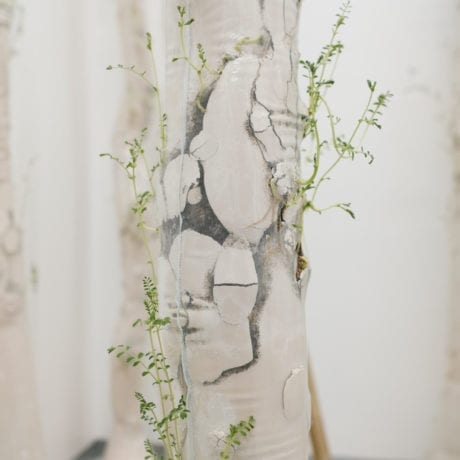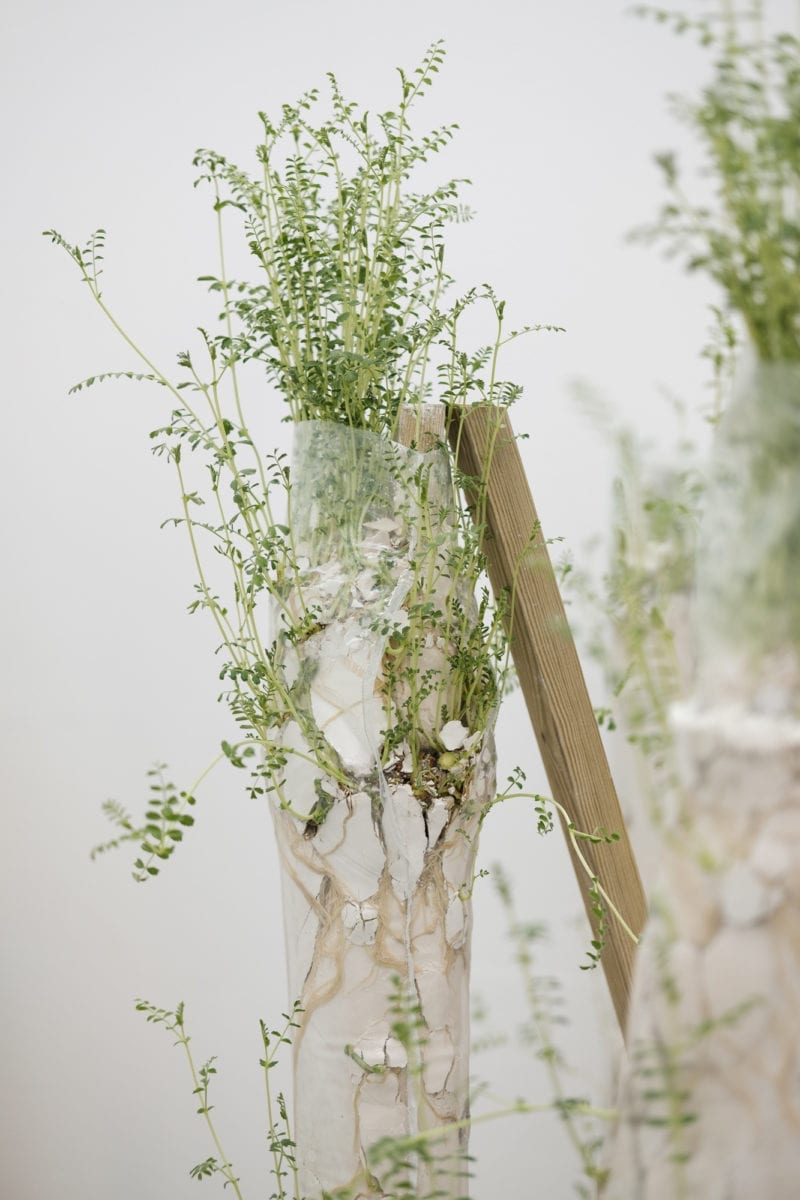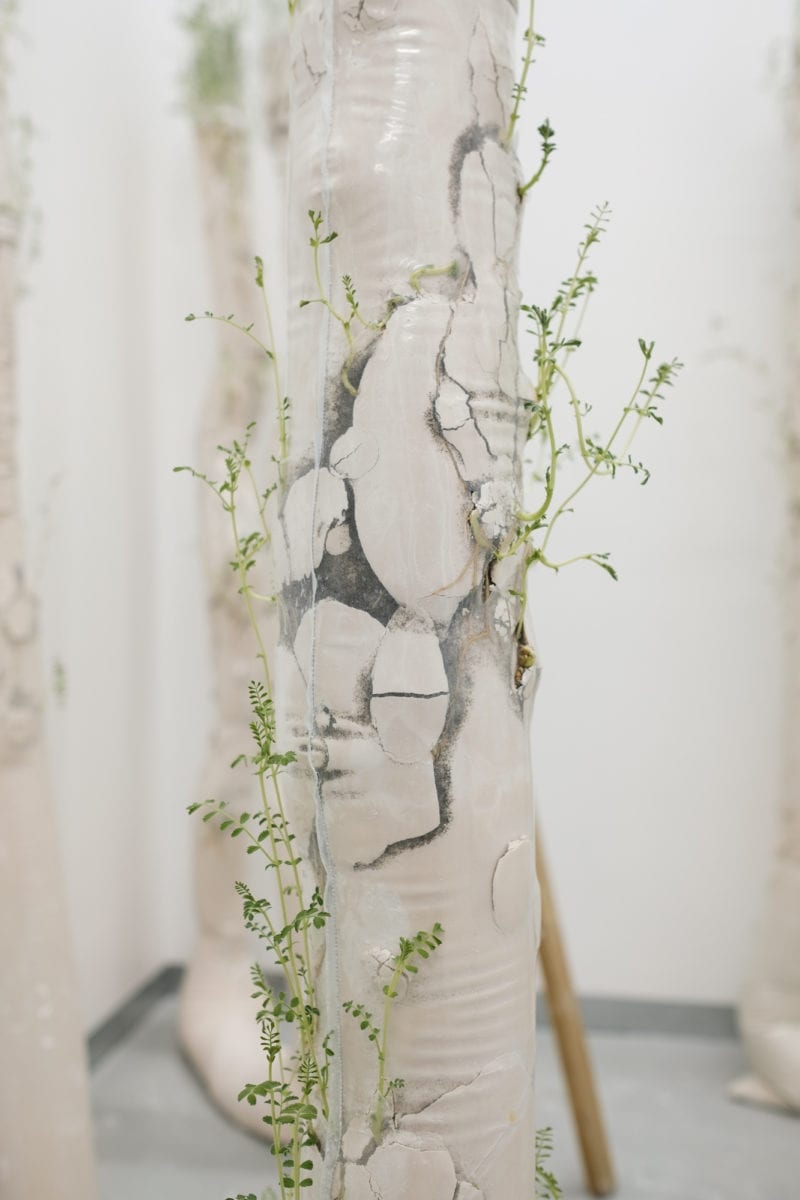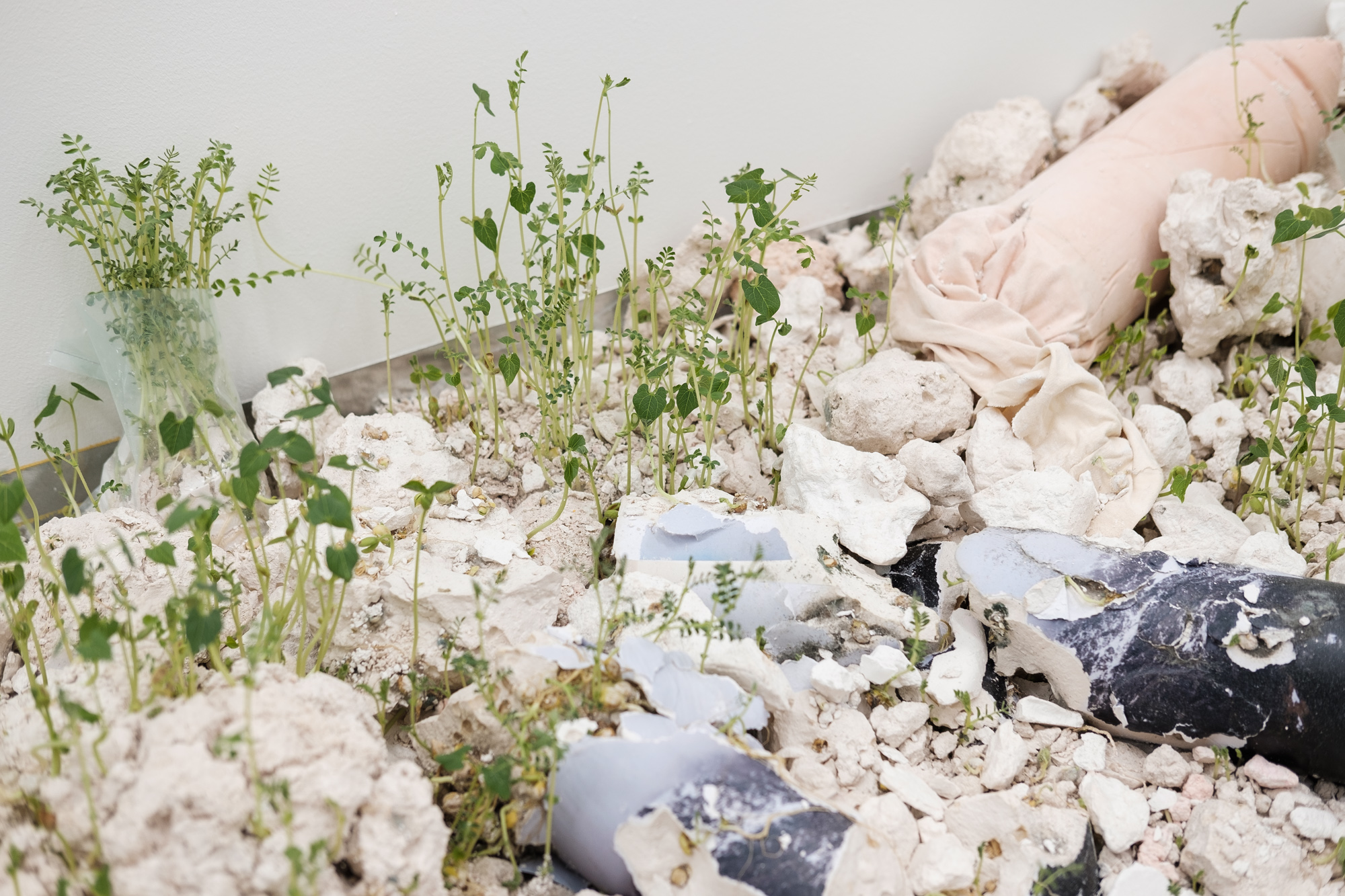
Earlier this month, Ramona Zoladek was announced as the winner of the Elephant x Griffin Art Prize
. It’s the first art prize we have supported, which is aimed at young and emerging artists. Her work caught the eye of the judges—including artist Shezad Dawood, who made the announcement—for turning “a really fragile ecosystem into a really bold and confident sculptural intervention”. Her work at Elephant West, where the eleven shortlist artists are all currently showcased, leads on from previous projects, combining the practical rubble material of building sites with live plants and tubular structures. The works are washed with a delicate palette of pinks and blues, teetering on a border between manmade mess and aesthetic beauty. As the show progresses, the works will grow and develop in their own way.
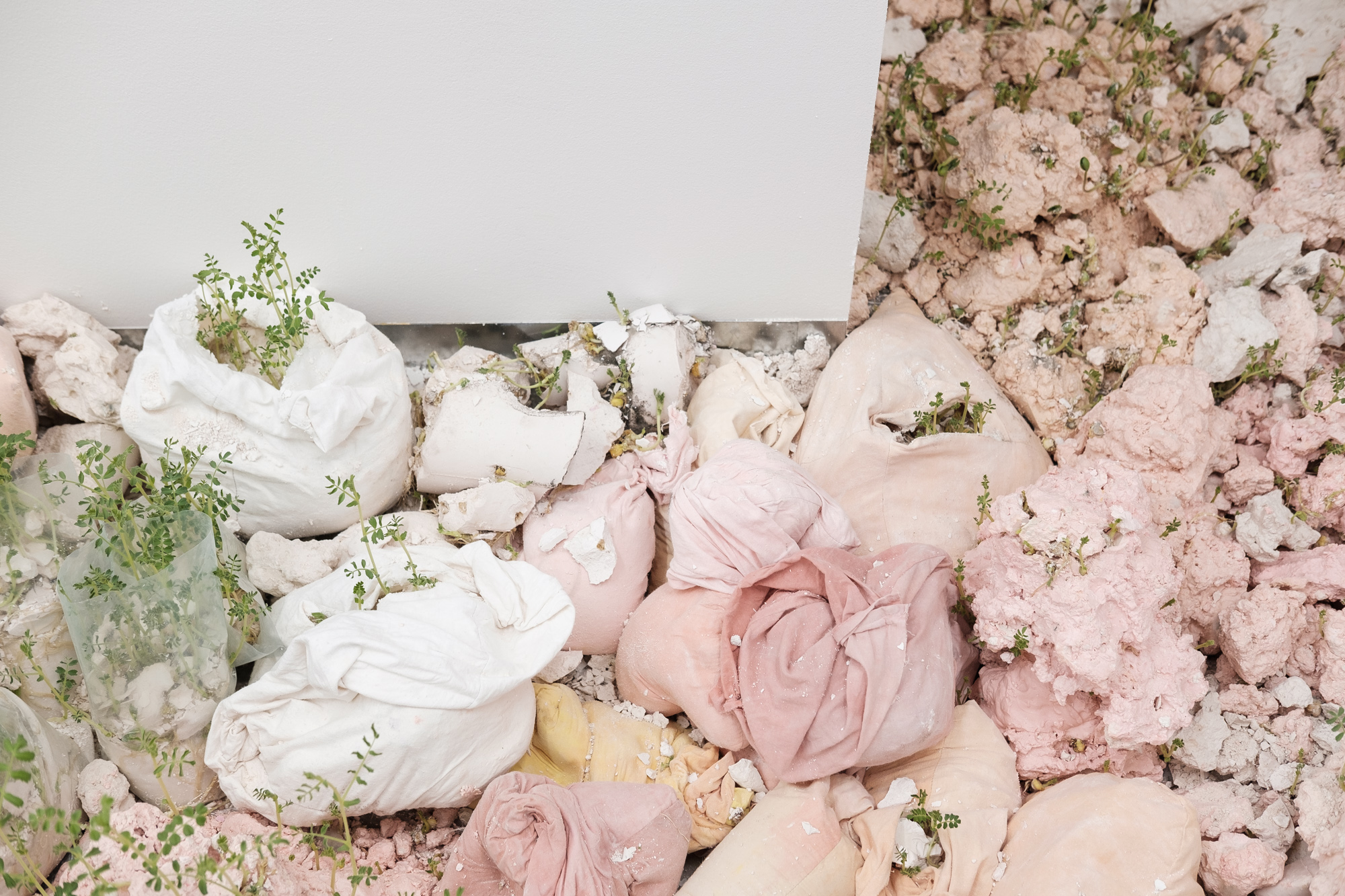
Congratulations on your win! Can you talk me through the two pieces of work you’re showing in the space?
Thank you very much. The new work is a contingency of my previous ideas but at the same time it has progressed. In my previous works the relationship between architecture and nature was obvious and visually clear as I used architectural geometric shapes. My new work is more organic in its form. I still use building and organic materials. I have used a mixture of plaster and chick pea seeds in both pieces of work. I try to create various environments and allow them to develop over time, going through a life cycle as the chick peas come to life. The overall process I go through when creating my work is very important as it has phases and I must achieve a balance in order to reach the final result.
“It tells a story of loss and hope”
I love the way you work with the corner of the room in one piece, was this created very specially in response to the space, or are your works flexible from one space to the next?
Both exhibited works were created deliberately for the exhibition and I took the space into consideration. The shape of the floor piece was dictated very closely by the space I worked with. When working with installation and sculptures I always consider the space where work will be exhibited where possible. The surroundings help with finalizing the look of the work. I see it as a conversation between both aspects.
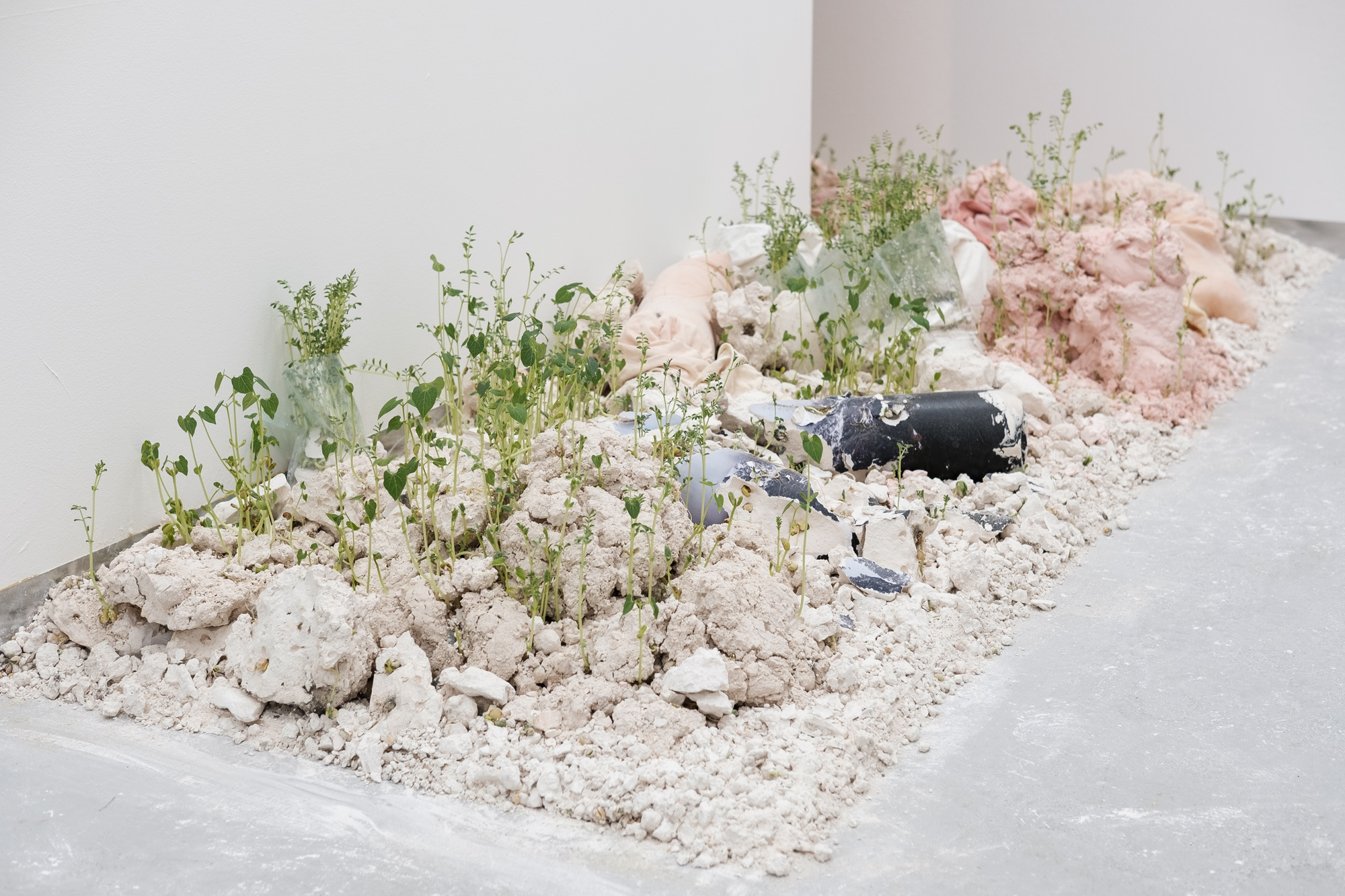
There is a synergy at play in your work, between very raw materials we might associate with building and debris, and more beautiful colours such as light pinks and blues. How do you see the balance of these two elements?
The use of pastel colours softens raw, heavy building materials. At the same it enhances the inherent beauty and messaging of both. The synergy communicates more than just the sum of the parts. It tells a story of loss and hope.
There is quite literal life in your works, with the various plants that appear through the cracks. How is this maintained through the lifespan of the work itself? Do you allow the plants to die throughout a show’s run or is it important to you that these are healthy and, perhaps, a sign of hope?
When I physically pour the mixture and seeds into the final form my input is finished. I then leave the work to itself where its life cycles commences. The seeds live only by absorbing water from the plaster for up to two months. It depends on the temperature and the actual density of the plaster mixture, and the size of the work. There is an element of hope and strength in the work as I rely on the plants breaking through the building material. I see it as romantic and poetic—we all sometimes need this in our lives!
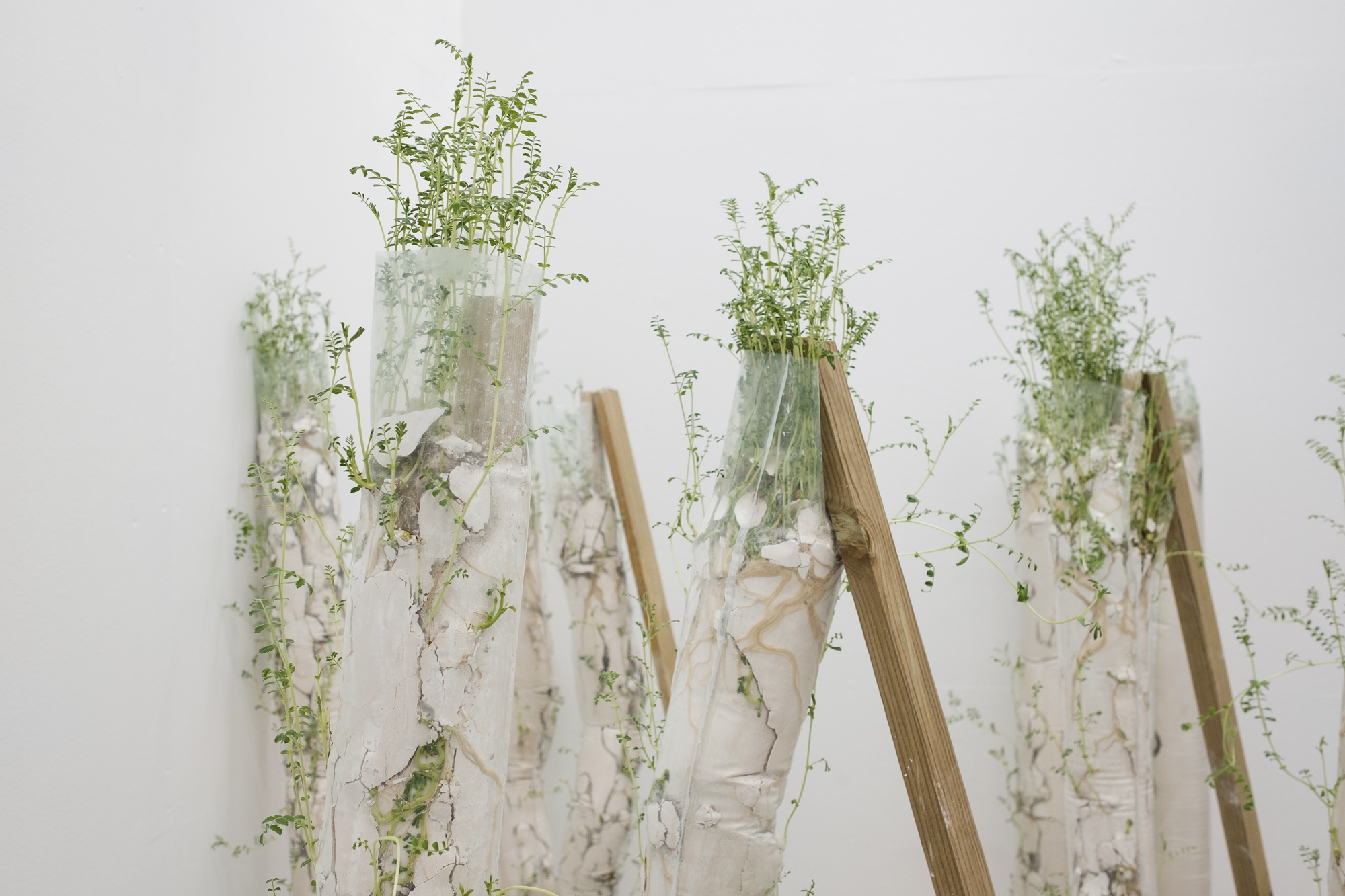
What can we expect from you in the coming months?
I will continue my usual studio work. I tend to work quite intensely for periods and then need to take breaks to recharge. Let’s hope for some good outcomes in 2019!
